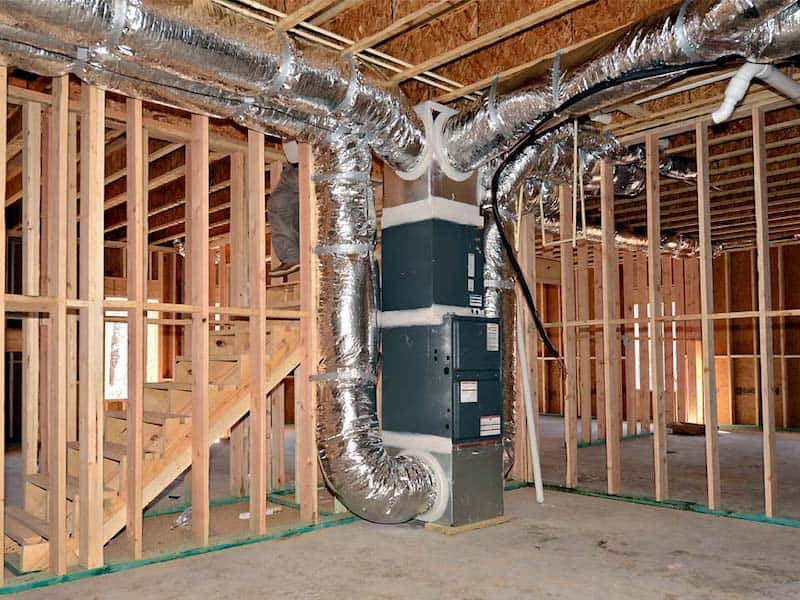HVAC systems are among the most common among the many ventilation systems installed in a home. All these ventilation systems require different ducting systems according to their function. Yet, the ducting can be further categorized into two primary categories: Rigid and flexible (Alumaflex) duct systems.
There are many factors that determine the best ducting for your ventilation systems, such as code requirements, budget, etc. When installing a brand new HVAC system, it is essential to have extensive knowledge about different duct systems that suits your needs. Therefore, this article will discuss the two main types of ducting systems, their pros and cons, and how you can choose the right ducting for your home.
What Is Ductwork?
The passageways used in HVAC systems are known as ducts. Their primary function is to efficiently remove and deliver air and evenly distribute them at various temperatures to your entire home.
The Two Types of Ductwork
Since you have learned what a duct system does, it is now time to tell you about the two primary types of ducts you can choose from, according to your house’s needs. Let us discuss each type with its features, pros, and cons.
Flexible (Alumaflex) Ductwork
Typically tube-shaped, the alumaflex ductwork is made from a steel-string wire coil covered with a flexible polymer plastic. These ducts are the best option to install in small spaces where the rigid duct can simply not fit. Since the flexible ductwork uses cheaper materials, it is quite an affordable choice to make.
Pros And Cons of Flexible Ductwork
- It is crucial to install the flexible ductwork carefully with the least sagging and snaking possible.
- The ductwork needs to be adequately secured and supported because it is lightweight.
- As the name suggests, this type of duct is flexible, so the bends, kinks, and turns need to be minimized as much as possible, as it may affect the efficiency of delivering and removing air.
- Alumaflex ducts are easy to install and affordable as compared to rigid ductwork.
Rigid Ductwork
This type of ductwork comes in a variety of materials and sizes. They can be cylindrical or rectangular, consisting of a solid material covered in insulation. Rigid ductwork is pretty reliable and enduring but more on the expensive side. However, with a high price also comes higher quality, as it does not make any noise when running. Three common types of rigid ductwork include fiberglass ducts, fiberboard ducts, and sheet metal ducts.
Pros And Cons of Rigid Ductwork
- Rigid ductworks are more likely to repel mold and growth because of their non-porous and smooth surfaces.
- The rigid fiberglass ductwork gradually deteriorates with time, releasing particles in the air, which can be unhealthy for the residents.
- It is also challenging to clean fiberglass ducts.
- There is a high chance of mold and growth development on fiberglass ducts, unlike sheet metal ones.
What Type of Ductwork Should I Choose?
Today when most houses have a modern construction, people are inclined towards installing flexible ductwork because of its affordability compared to rigid sheet metal ducts. Installing a rigid duct is also tricky because it needs to be covered in insulation with more transition points to be made. This can eventually lead to more air leaks from the rigid duct. However, flexible ducts have many turns and bends as they run through the entire house. But, it takes much less time than the rigid duct to install. Therefore, both the vents work perfectly fine if they are designed and installed correctly. It entirely depends on which one to choose according to your house’s size, budget, and installation time.


Recent Comments